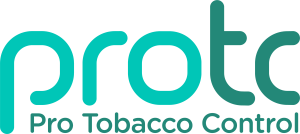Link to source : https://www.who.int/publications/i/item/9789240019188
This WHO technical manual on tobacco tax policy and administration builds upon the 2010 WHO technical manual on tobacco tax administration by further detailing the strategies for effective tobacco tax policy development, design, implementation and administration. This 2021 edition also serves as an update to the 2010 manual, incorporating the latest developments in science, technology and policy, as well as providing illustrative recent examples from a variety of countries. The best practices laid out in this manual are designed to inform governments on the development of their tobacco taxation policy, facilitating the achievement of their health and revenue objectives while also supporting their overall development strategy.
The evidence is clear: significant increases in excise taxes that lead to price increases have consistently proven to be the most effective, as well as the most cost-effective, mechanism for reducing tobacco consumption. Despite this undeniable fact, tobacco tax increases remain the least implemented policy in the package of effective tobacco control policies globally. In 2018 only 38 countries, covering 14% of the global population, had sufficiently high tobacco taxes. Tobacco industry interference and their SCARE tactics remains a major stumbling block to significant tax increases. Government resolve and commitment to protect people’s health is needed to counter powerful vested interests long opposed to tobacco taxation reform.
This manual will guide readers through the necessary steps to create and implement the strongest tobacco taxation policies for their specific countries, including practical pointers on how to navigate through the political process and ensuring the right support for tax policy change.
Significant tobacco tax increases, designed and implemented according to the latest guidance and best practices presented in this technical manual – and as a strong component of a comprehensive tobacco control strategy – will bring about substantial reductions in tobacco use and the health and economic harms it causes.
- Chapter 2 delves into the theory, practice and empirical evidence on tobacco excise tax policy, including current global trends.
- Chapter 3 focuses on tobacco tax administration. It provides an in-depth discussion of the fundamental components that make tobacco tax collection effective and efficient, ensuring achievement of the health and revenue objectives of tax policy
- Chapter 4 deals with the important challenges in the area of political economy when countries attempt to increase tobacco taxes or simplify the tax structure.
- Finally, Chapter 5 presents a comprehensive list of the best practices in tobacco tax policy and administration discussed throughout this manual. The list is intended to serve as a practical guide and quick reference to the salient points presented.
- At the end of the document there is a two-page tobacco tax reform checklist for tax policy-makers to consider when planning to go on the journey of implementing substantial reforms on tobacco taxation.

